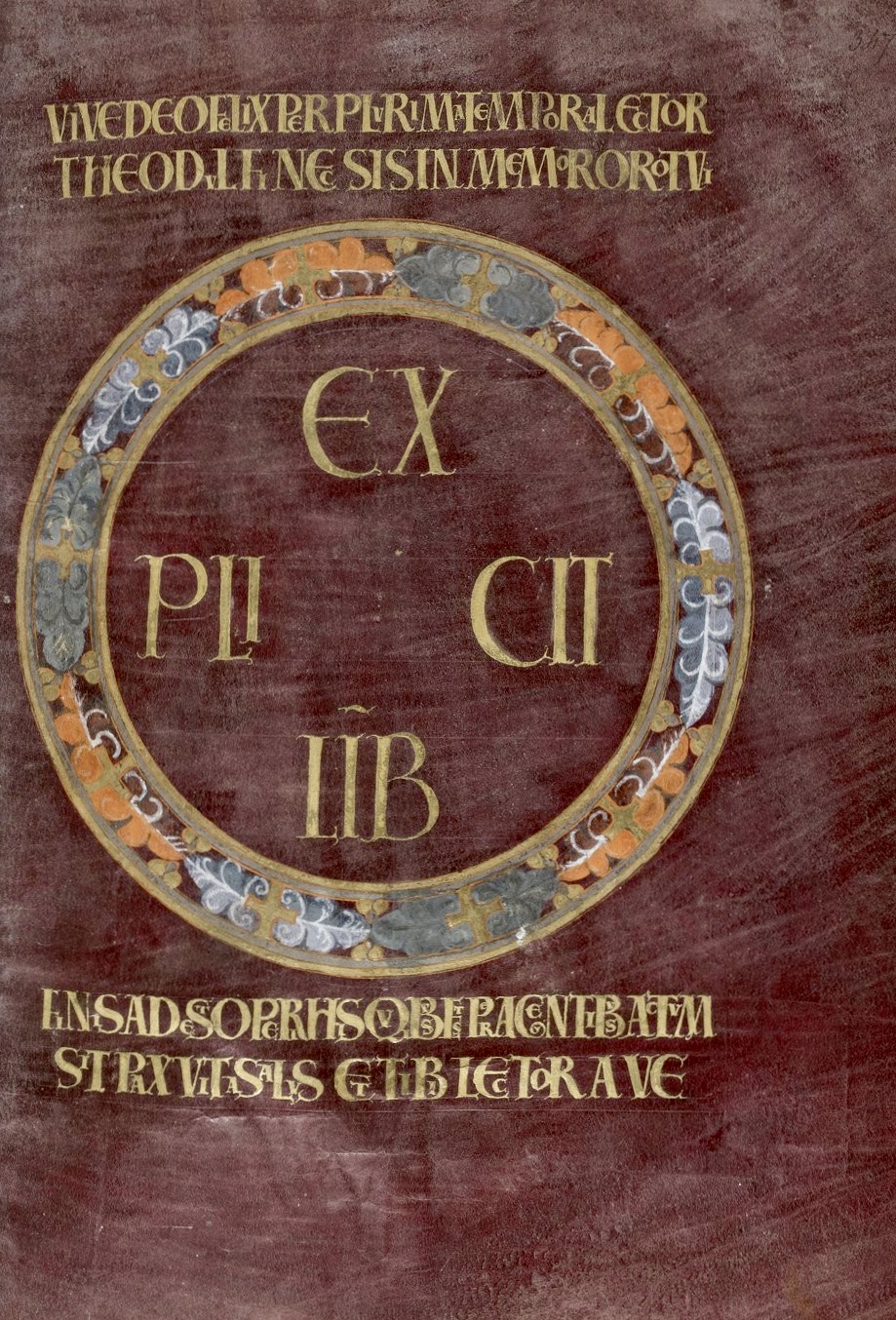Making your own gold powder to use it for:
chrysography and gold paint.

Gold is an integral part of medieval manuscripts.
Most people are familiar with examples of beautifully gilded initials in medieval manuscripts. This often involved gold leaf applied to a flat or raised surface. In the case of a raised surface with gesso, the letter was also polished. The result was a beautifully shiny letter that became a lustrous highlight of the written text.
Less well known is writing with gold ink and painting with gold paint, both of which were made from gold powder dissolved in water and a quantity of binder, for example clarified egg white or gum arabic.
Writing with gold ink is called: Chrysography, the word comes from Greek: chrysos = gold, graphein = writing. Before painting, the powdered gold with binder was often kept in a shell, hence the name: shell gold. A (mussel) shell was often used to store the paint, hence the name: “mussel gold”.
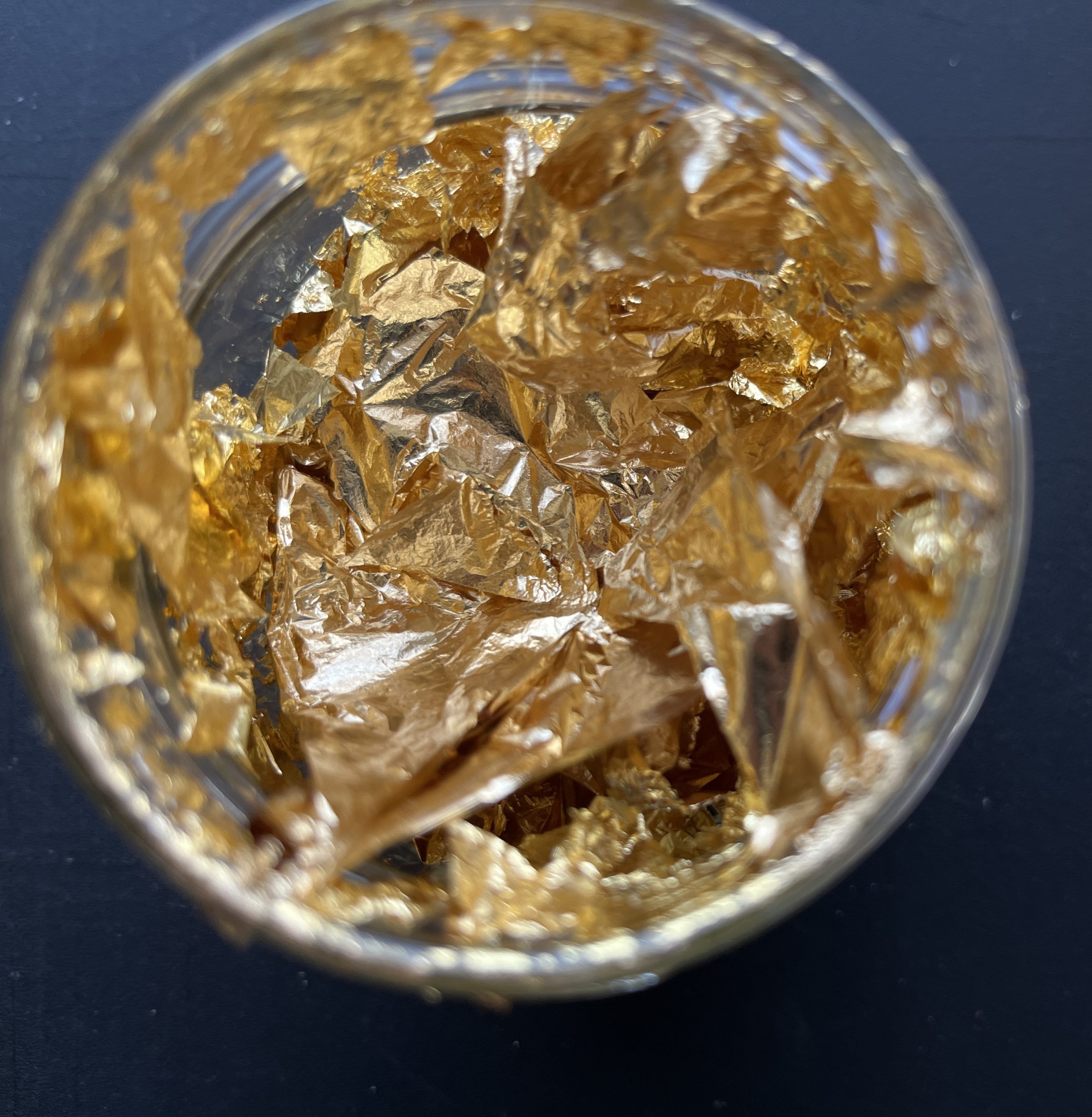
The term chrysography originates from Greek but the practice dates back to early Hebrew. Jewish scribes used the gold script for religious texts. Eventually, it was also adopted again by the Romans. The story goes that one day the Roman emperor Nero heard that in one of the temples of Athens there was an ode with letters written in gold. Vain as he was, Nero immediately ordered an ode of his own also written in gold letters for the altar of Jupiter. In this way, the practice of gold writing came to Rome.

Bible de Théodulfe, bron: Gallica BnF.
Over time as Christianity became established, chrysography became a common practice for liturgical books and especially for the Gospel books. Chrysography had a dual function here, on the one hand worshipping the religious text and on the other hand highlighting the sacred text through its brilliance in candlelight. Often, the golden letters were also written on parchment coloured with real purple from the purple snail that bore the name Murex. Soon, substitutes such as: Orseille a red dye derived from lichen and also a red colour derived from a scale insect: called Kermes Vermillio. These codices had a double prestige: the golden script and the purple parchment. Purple, after all, was an imperial matter because of its price and only intended for special purposes.
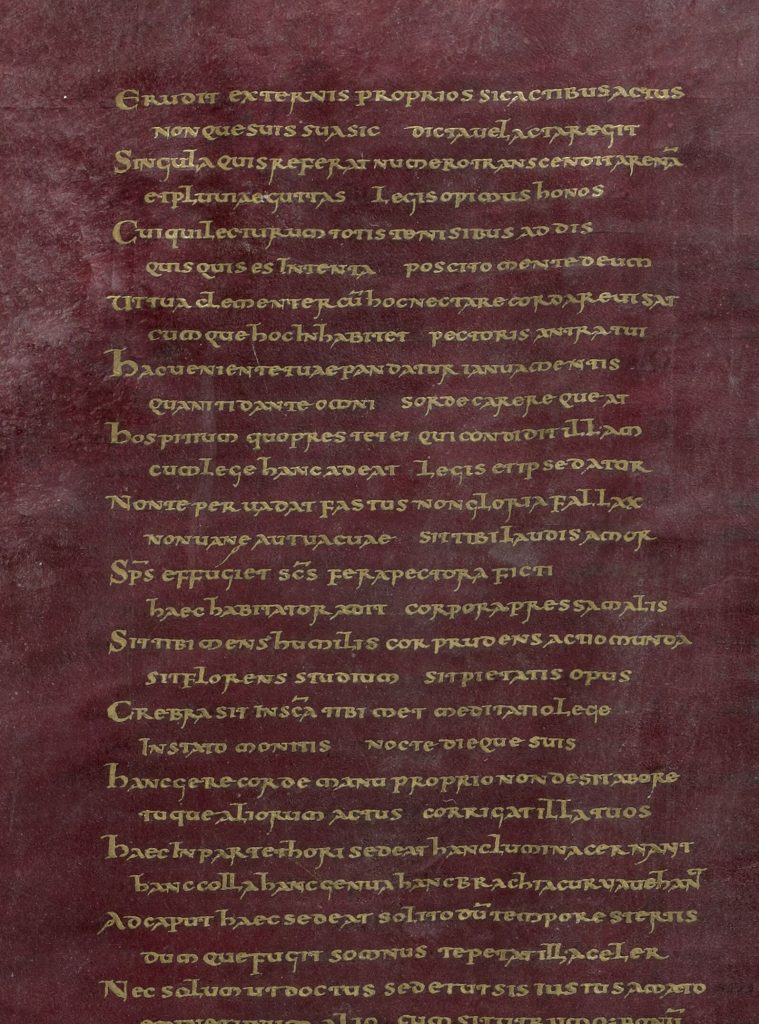
Writing with golden letters reached an all-time high during the Carolingian Renaissance. Examples include the so-called ‘Golden Gospels’ such as: the Godescalc Gospel and the Gospel Book of Saint Médard de Soissons.

However, there was a difference of opinion about writing books in letters of gold. Not everyone was delighted with that. There were preachers who believed that the gold was better spent on the poor. Sermons were even held against this ‘excess’ but to no avail. Writing with gold letters was not only a Byzantine affair but fine examples of codices with gold letters were also made later during Charlemagne’s reign. A lot of codices were written in this way but still few of these books have survived partly due to fires, wars and other disasters. Not only in the West were codices written in gold ink but the Eastern – Islamic tradition also has many examples of them.
In the 12th century and later, another technique was also used to make gold letters. First, a light-coloured, sticky ground was applied with the pen and then gold leaf was also applied.
By the 15th century, chrysography in the classical sense was done with, however still it is still used by lovers of writing and books, artists.
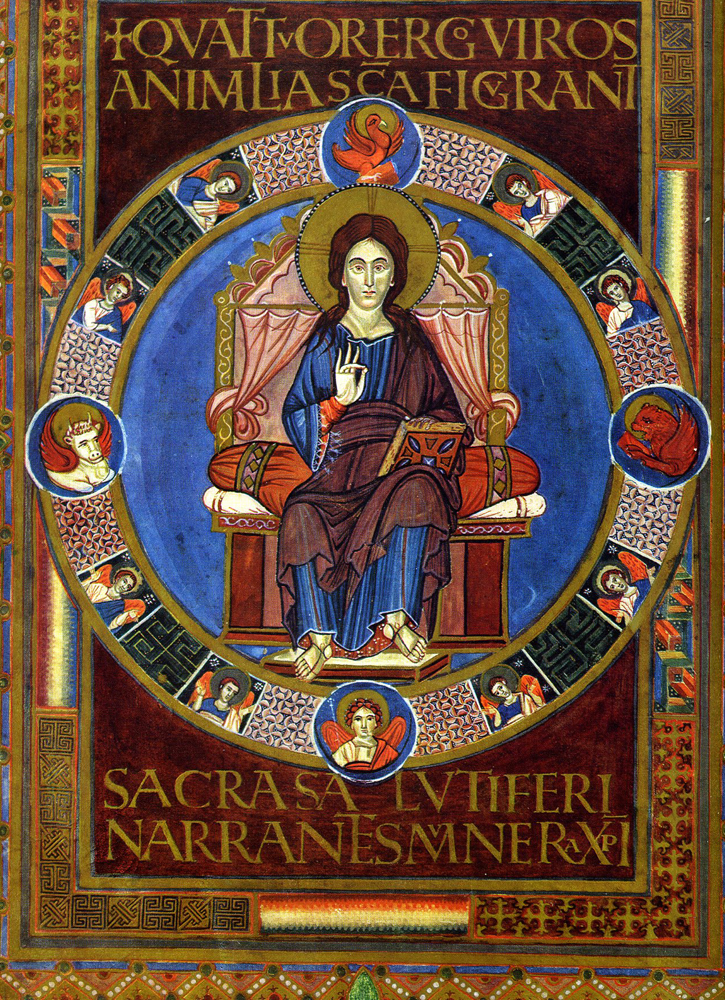
The Evangeliarium of Lorsch is also known as the Codex Aureus Laureshamensis or the Codex Aureus of Lorsch. It is one of about eight manuscripts known as the “Codex Aureus”. It is a Carolingian illuminated manuscript that was probably commissioned by Charlemagne at his court in Aachen around 810.
In addition to writing with gold ink, silver ink was also used. An important example of this is the: Codex Argenteus from Upsala. Originally silver letters had great lustre however corrosion often turned the letters black.
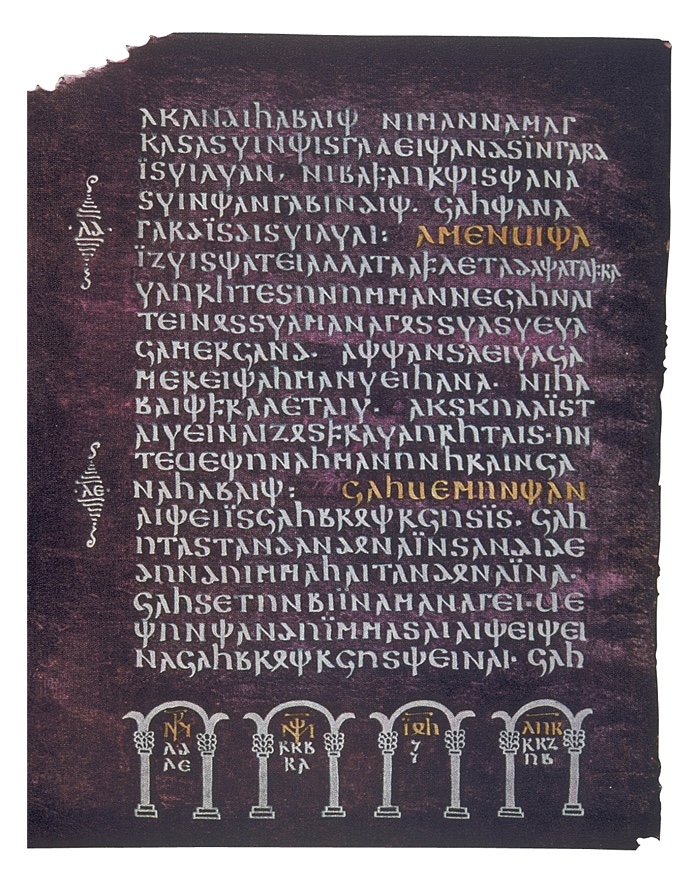

Painting with gold powder / gold paint
The images in this post show texts written with gold ink but also representations where the ink (paint) was used to paint with. Sometimes some larger surfaces other times to depict specific details. Hence the title of this post: “Making your own gold powder for chrysography and for painting gold”.
In the depiction of the flight to Egypt above, we see the painting gold applied among others in the elevations of Mary’s cloak and the aureoles.
Painting gold is not economical to use. You need a relatively large amount of gold to add gold to a piece. Gold leaf is much more economical and you can also polish it more beautifully, shiny. Painter’s gold remains somewhat matt.

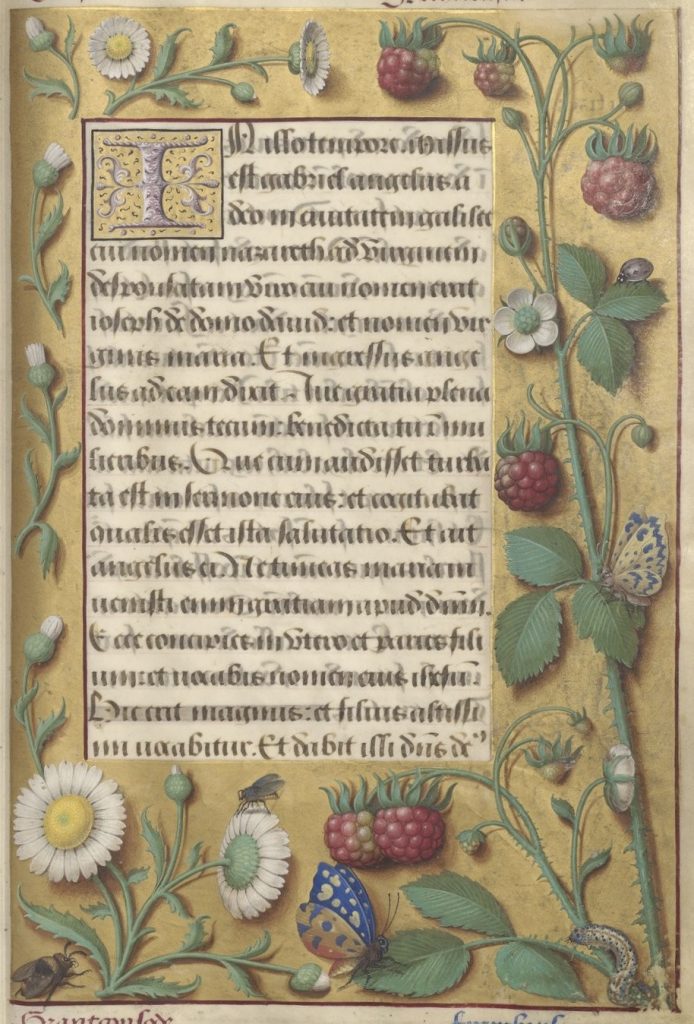
Powdered gold was also occasionally mixed through the paint, giving you a very nice subtle layer of colour that was often used for so-called trompe-l’oeil borders. Painting gold was also used for grisailles like the one below.
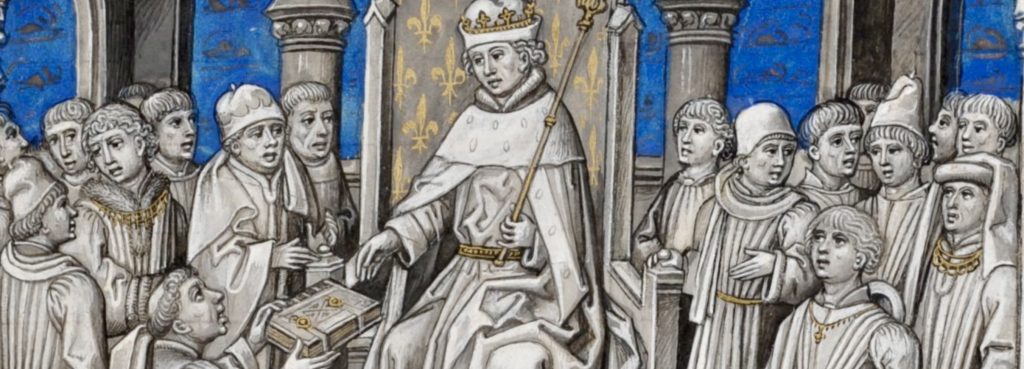
Making gold powder.
For those who would like to try it themselves, below is a recipe for making powdered gold that you can use to prepare gold ink and/or gold paint. If it is all just too much trouble for you then you can also use a modern version. Drops of gold paint can be bought in various sizes. (See below).
Recipe for making gold powder for gold ink.
Supplies:
A ceramic mortar with pestle.
A sandblasted glass plate and a glass runner
Salt
Honey
Loose sheets of gold leaf
Distilled water
Pipette (To suck away excess water.)
Glass jar
A palette knife.
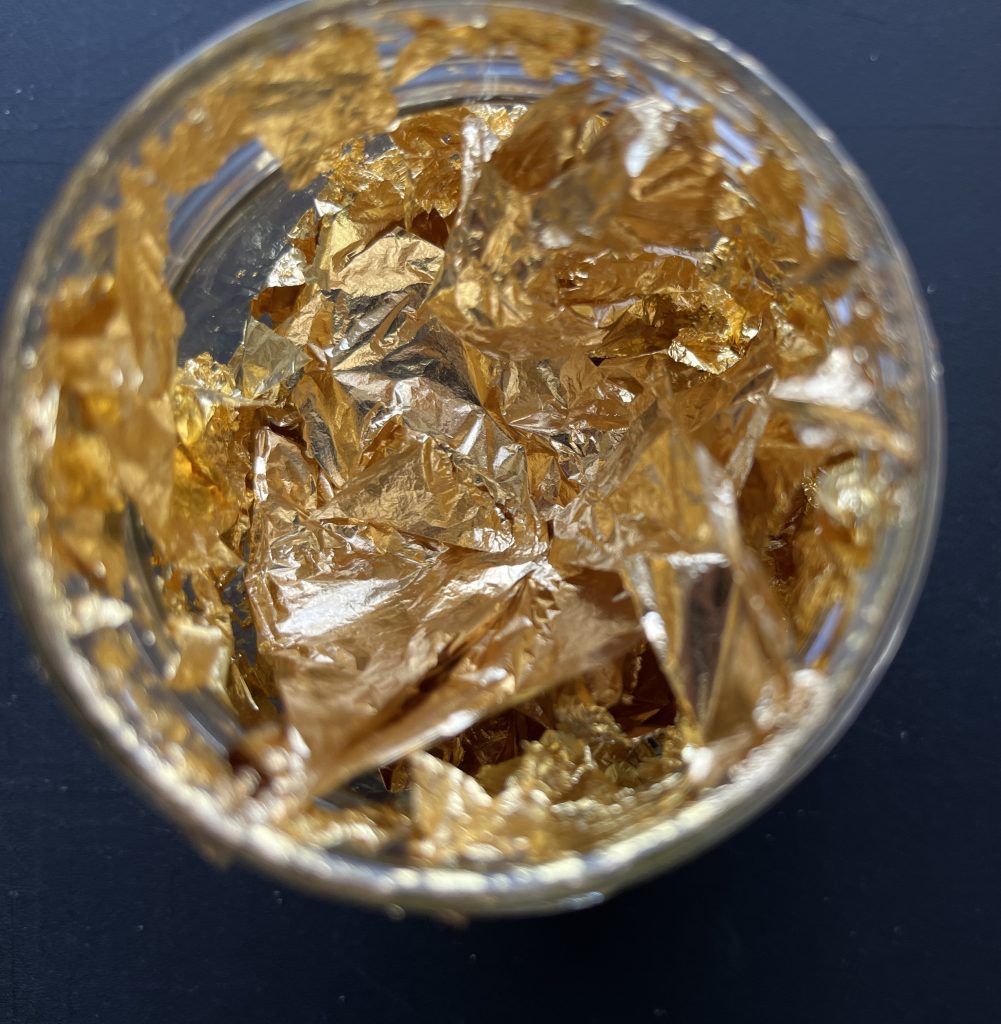
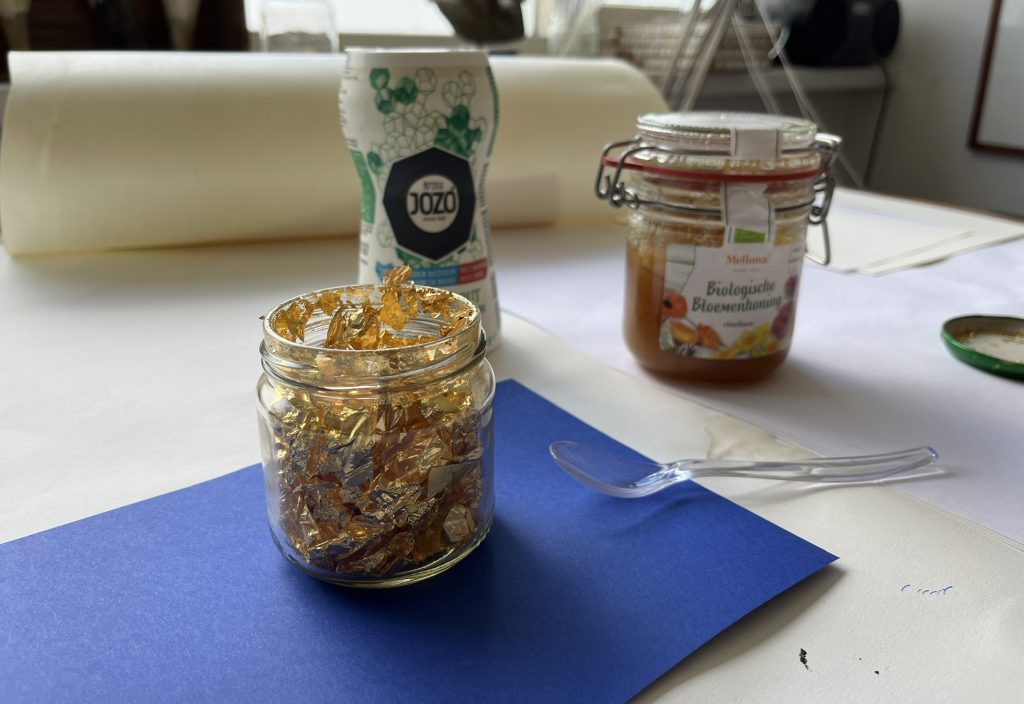

Put about one and a half to two teaspoons of pure salt in a large ceramic mortar and add a few drops of honey. If necessary, add a few drops of distilled water with a pipette. Rub this together to form a crumbly mass. Then take a few loose sheets of gold leaf and add them. You can also use leftovers from other gilding projects excellently for this purpose. You can also apply all this to a glass plate that has been roughened by sandblasting instead of the mortar. You then rub with a glass runner. We will then need a palette knife to keep bringing the mass back together.
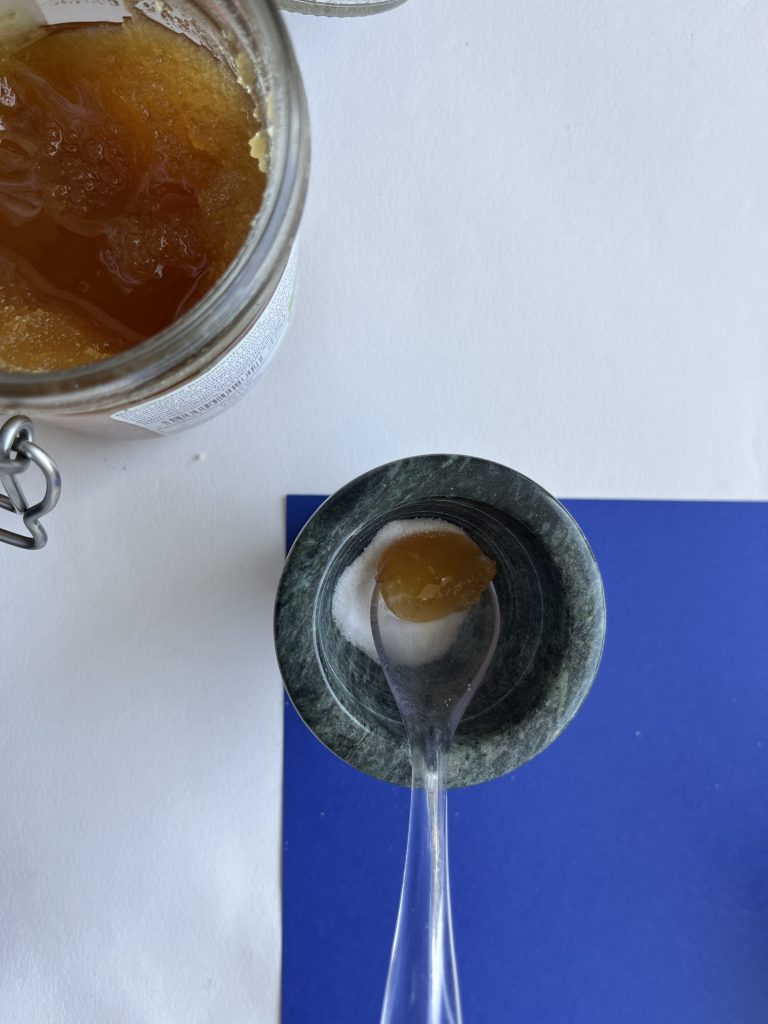
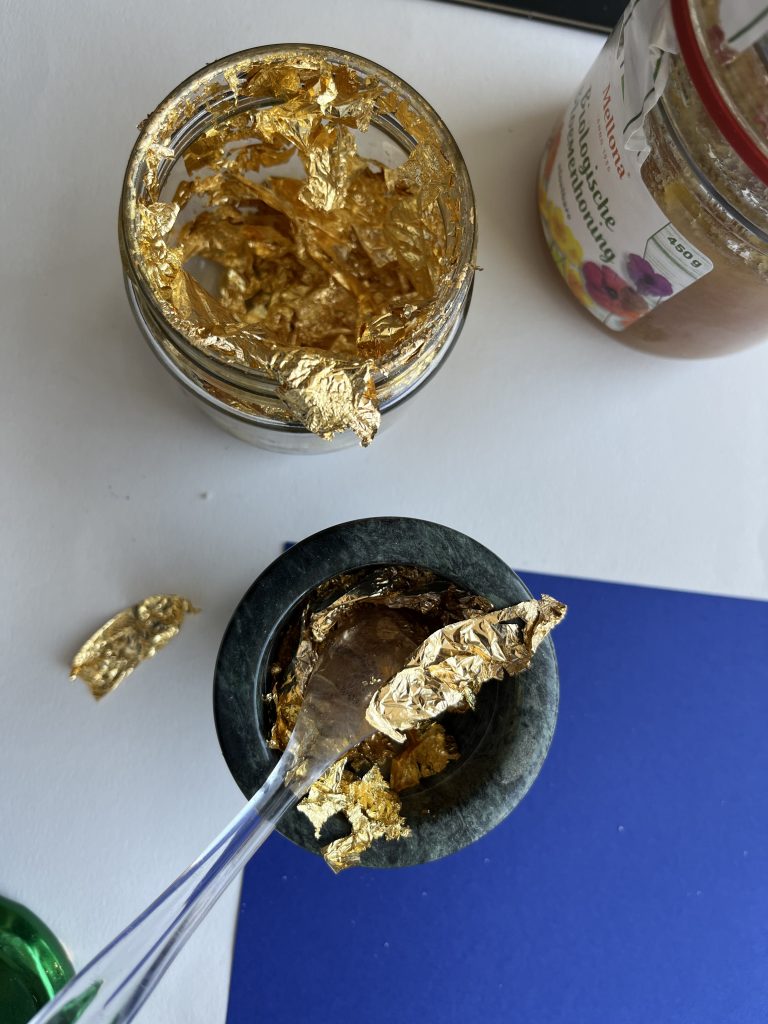
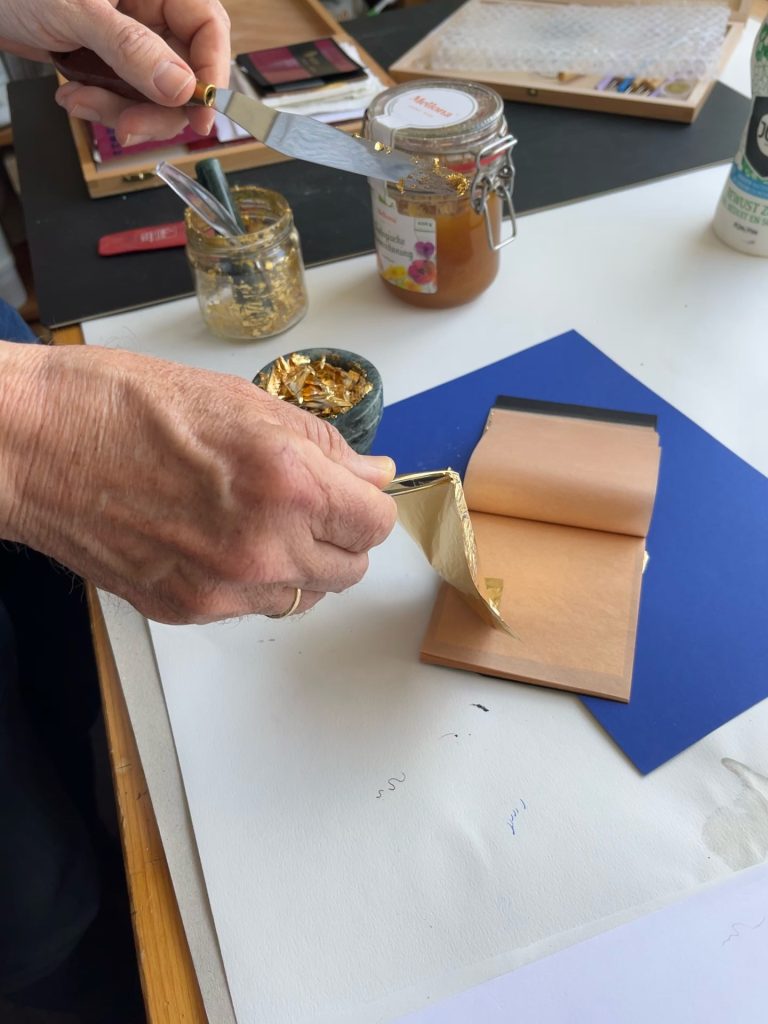
Then take some loose sheets of gold leaf and add them. Personally, I found it easy to start with a mortar and pestle and then continue with a glass runner on a sandblasted glass plate. This grinds the gold faster and you can easily see if there are any large(er) particles.
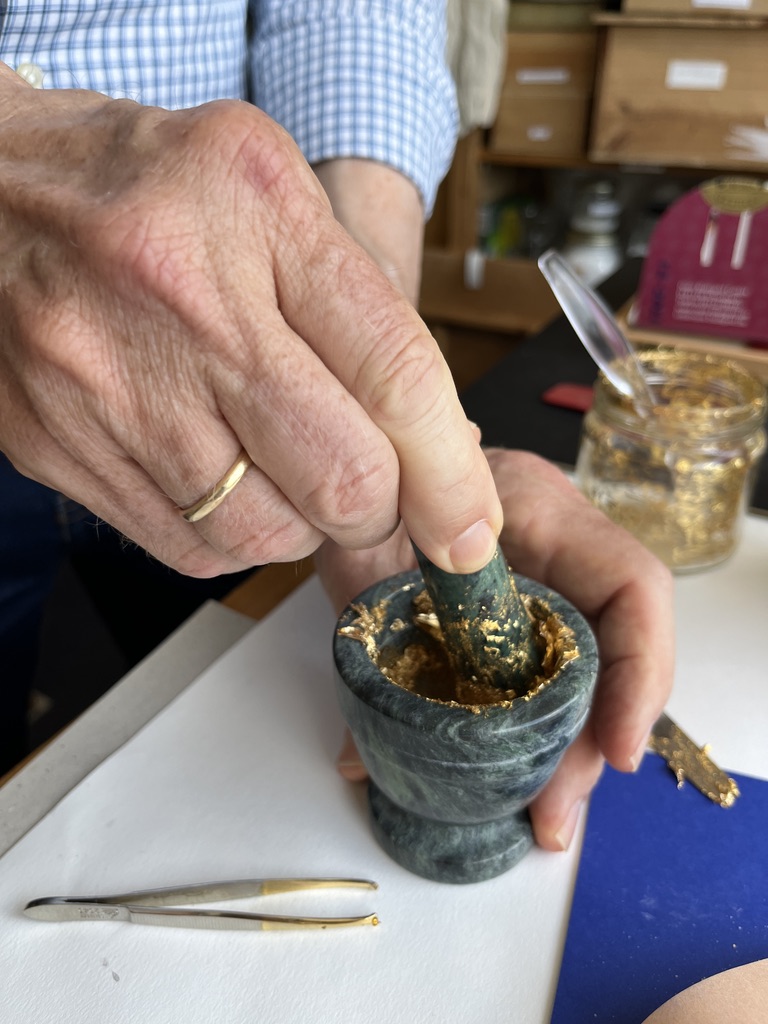
Rub vigorously with the pestle in a mortar (half an hour to an hour) the longer the better. The mass will have become evenly coloured (beige) and no separate gold particles will be visible. If you are using a glass runner add a few drops of distilled water while grinding.
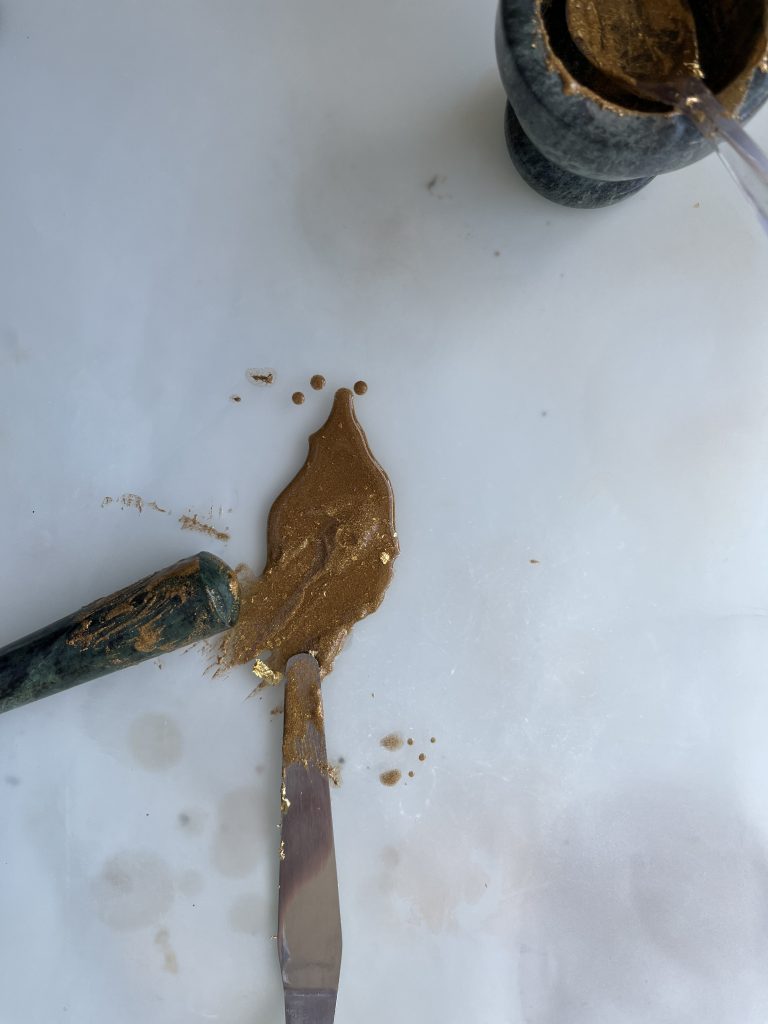
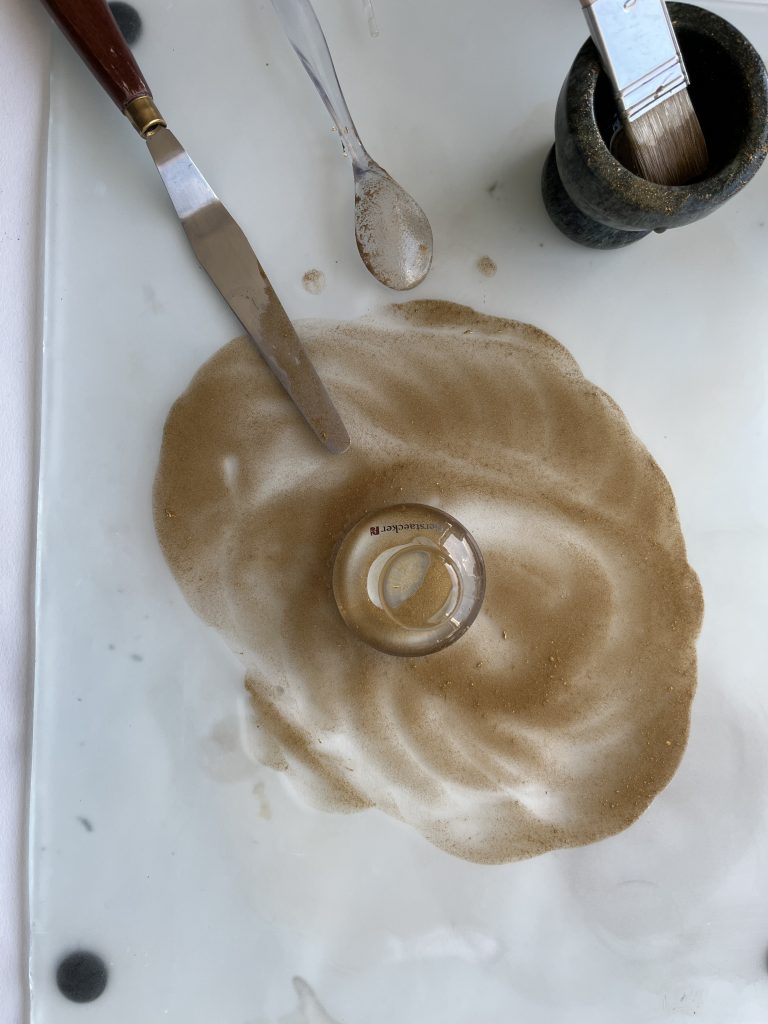
Working on the glass plate has the great advantage that you can see if there are any (too large ) parts of gold left. It is very important to do it thoroughly, the longer the better.
In the bottom photo, we can still see large parts of gold that still need to be ground.
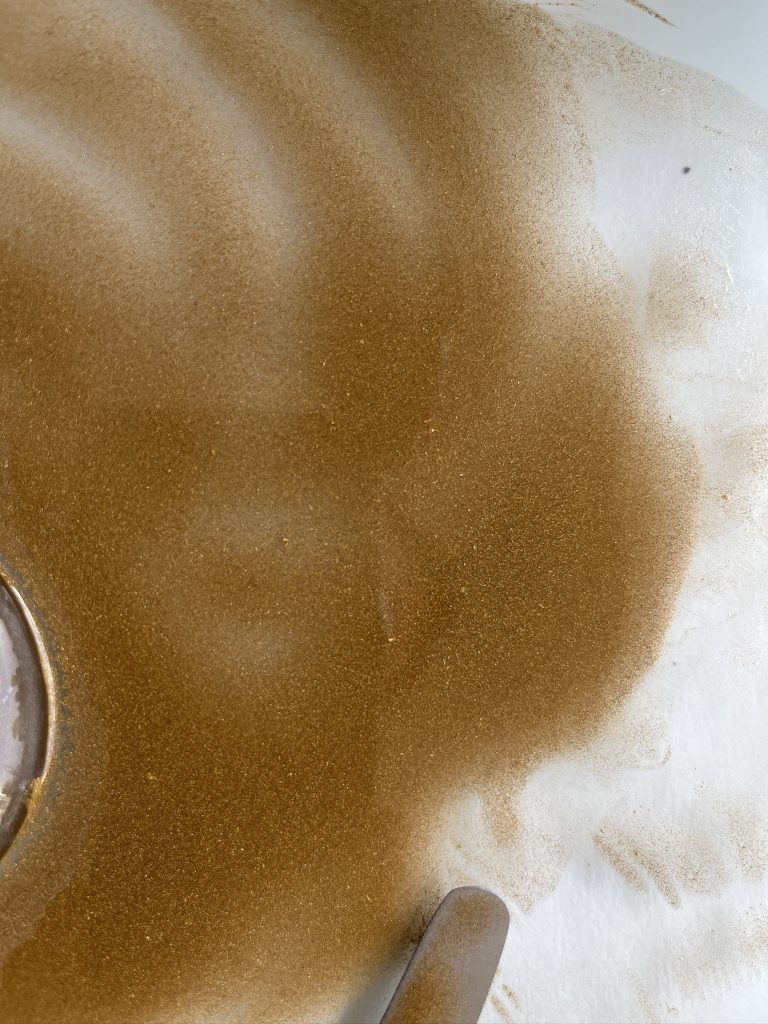
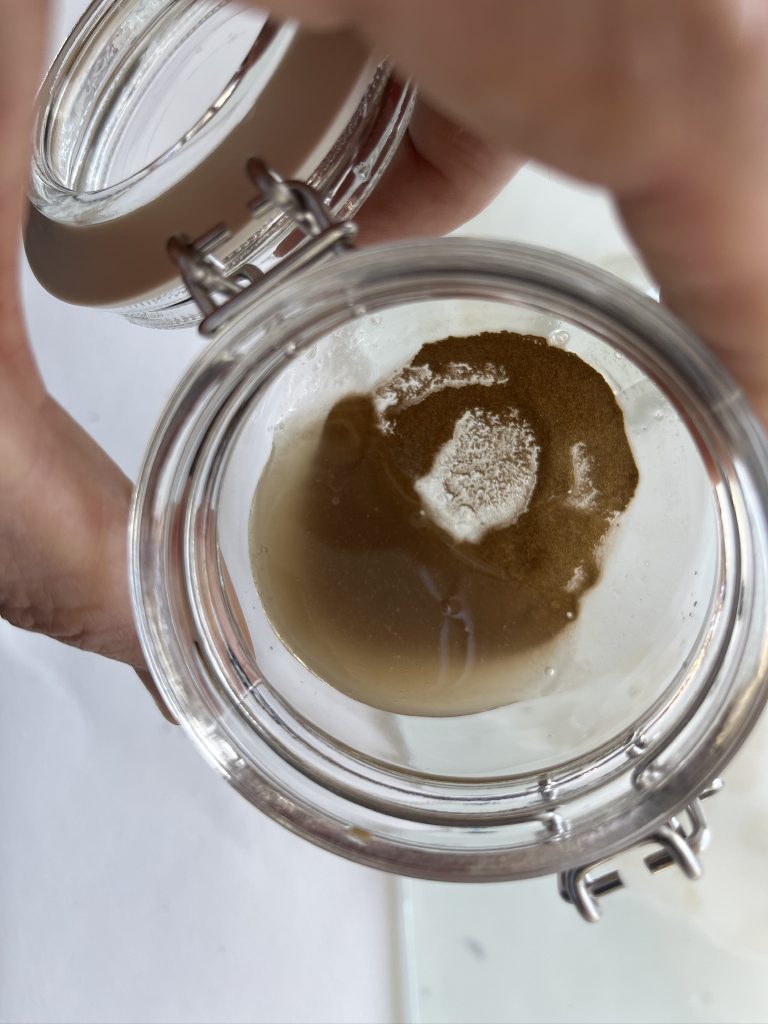
Take the mass off the glass plate and put it in a glass jar and then add boiling water to it. Don’t forget to rinse the pestle or runner as well to take off any remaining residual gold from it. Agitate the water and dissolve the salt and honey. Wait several minutes for the gold powder to sink to the bottom. Do this several times and very carefully. All the salt and honey should be dissolved and rinsed away.


After rinsing the gold well, pour off the water and let the rest evaporate. You can also gently suck up the water with a pipette without rinsing away gold. Place a cloth over the jar. The water can then evaporate quietly and the cloth protects the gold from the dust.

When it is all dry, brush the powdered gold into a sealable jar. To write: take as much powdered gold as needed and mix in gum arabic. Dilute it with distilled water. After writing, go over the gold with an agate polisher and it will shine slightly. For painting, we mix the dust gold with gum arabic or fish glue. We put that solution in a napkin or in a mussel shell.
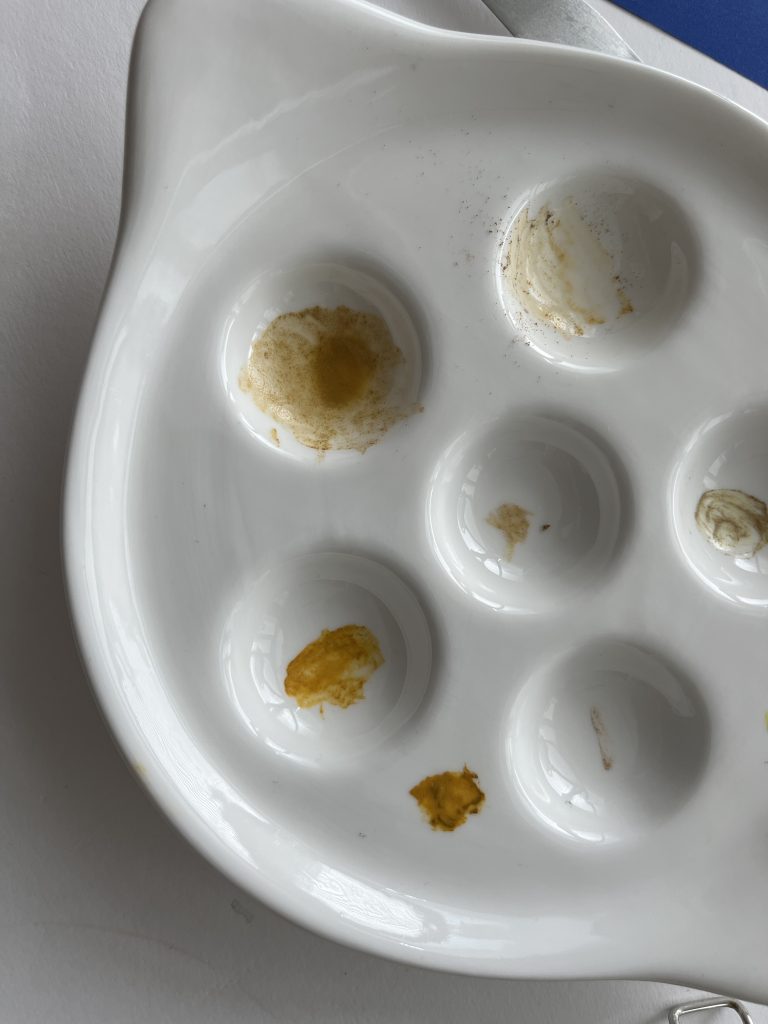

Trials with home-made painting gold. NB. Gold ink/gold paint will never shine as strongly as gold leaf on gesso.
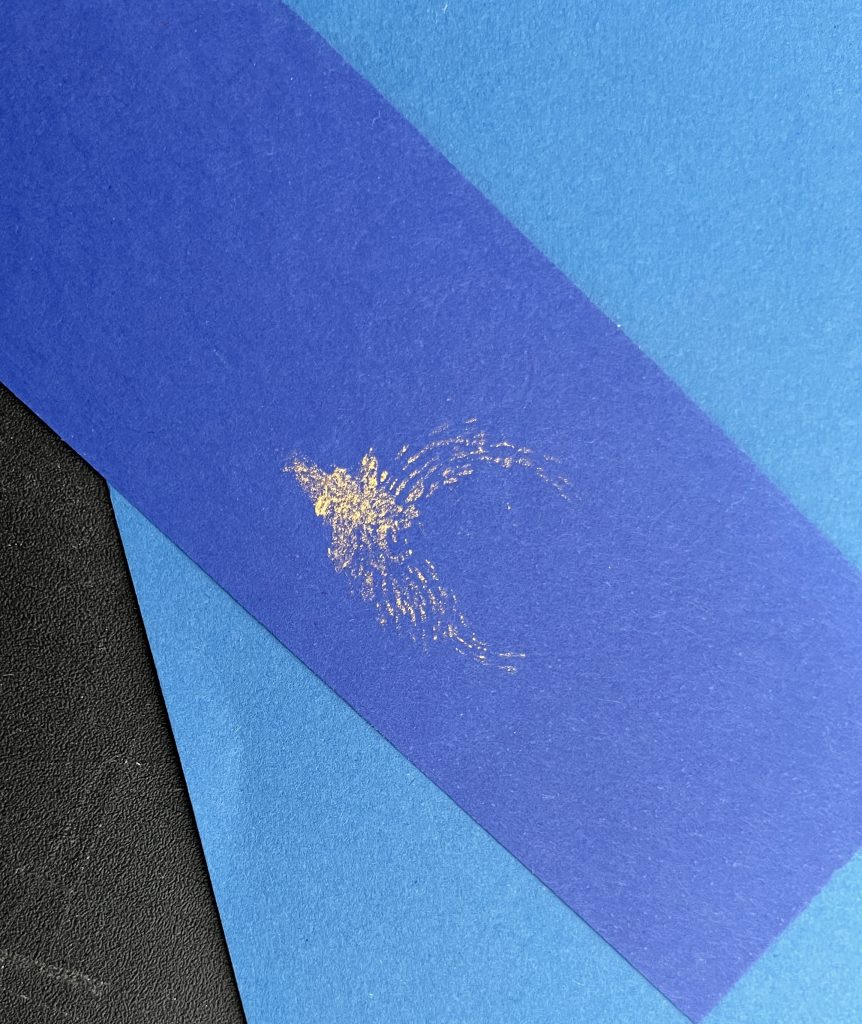
Below we see the use of painting gold in a grisaille. Mosaic gold was also used for these a replacement for gold.

As an alternative making your own gold powder and mussel gold, you can also buy it. It is available in small drops made of powdered gold mixed with gum Arabic. You can dilute this a little with distilled water and brush it on to your pen and write with it. The result is fine but you need a lot to write a piece of text.

